Table of contents
- The Evolution of E-Commerce in Smaller Cities
- What Are Hyperlocal Delivery Services?
- Key Drivers of Hyperlocal Adoption in Tier 2 & 3 Cities
- Business Models and Examples
- Technology Enabling Hyperlocal Services
- Opportunities for Local Sellers and Entrepreneurs
- Challenges to Address
- The Road Ahead: What’s Next for Hyperlocal in India
- Conclusion
- Frequently Asked Questions (FAQs)
What is Hyperlocal Delivery? In simple terms, a Hyperlocal Delivery Service involves delivering goods and services to customers within a very limited geographical area, often within a few kilometers of the seller’s location. Think of it as your neighborhood store or restaurant bringing your order right to your doorstep, quickly.
The Rise of E-commerce Beyond Metro Cities: For a long time, e-commerce in India was primarily concentrated in the major metropolitan cities. However, with increasing internet penetration and digital literacy, Tier 2 and 3 cities are emerging as significant growth drivers for the e-commerce sector.
Why Tier 2 & 3 Cities Matter Now: These cities represent a massive untapped market with a growing appetite for online shopping. As of early 2024, it was estimated that nearly 60-65% of new internet users in India were coming from rural and semi-urban areas (Source: Industry reports). This demographic shift presents a huge opportunity for businesses willing to cater to their needs.
Purpose of the Article: Understanding the Impact of Hyperlocal Delivery: This article aims to delve into the burgeoning landscape of Hyperlocal Delivery Services in Tier 2 and 3 cities, exploring its drivers, business models, technological advancements, opportunities, challenges, and its potential to revolutionize e-commerce in these regions.
The Evolution of E-Commerce in Smaller Cities
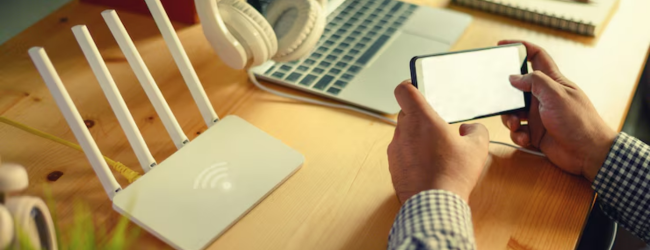
- Increasing Internet and Smartphone Penetration: The availability of affordable smartphones and cheaper internet data has been a game-changer. Millions of new users in Tier 2 and 3 cities are now online, eager to explore digital services, including e-commerce.
- Growing Aspirations and Purchasing Power: As economic development reaches smaller towns, the disposable income and aspirations of the people are also on the rise. They are increasingly looking for convenience and access to a wider variety of products, similar to their urban counterparts.
- Rise of Digital Payments (UPI, Mobile Wallets, etc.): The widespread adoption of digital payment methods like UPI (Unified Payments Interface) and mobile wallets has made online transactions seamless and convenient for users in these regions, overcoming the traditional reliance on cash.
- Shift in Consumer Behavior Post-COVID: The COVID-19 pandemic accelerated the adoption of online shopping across India, including Tier 2 and 3 cities. People got accustomed to the safety and convenience of ordering essentials and other goods online, a habit that continues to persist.
What Are Hyperlocal Delivery Services?

- Definition and How It Works: A Hyperlocal Delivery Service connects local businesses (like grocery stores, restaurants, pharmacies) with customers in their immediate vicinity. When a customer places an order through an app or platform, a delivery partner picks up the order from the local vendor and delivers it to the customer’s doorstep, usually within a short timeframe (often within hours).
- Difference Between Traditional vs. Hyperlocal Models: Traditional e-commerce often involves centralized warehouses and longer delivery times, sometimes spanning days. Hyperlocal Delivery, on the other hand, focuses on speed and proximity, leveraging local stores as mini-fulfillment centers.
- Types of Goods/Services Typically Delivered:
- Groceries and daily essentials
- Restaurant food and beverages
- Medicines and healthcare products
- Fruits and vegetables
- Meat and fish
- Stationery and books
- Flowers and gifts
- Repair and maintenance services
Key Drivers of Hyperlocal Adoption in Tier 2 & 3 Cities
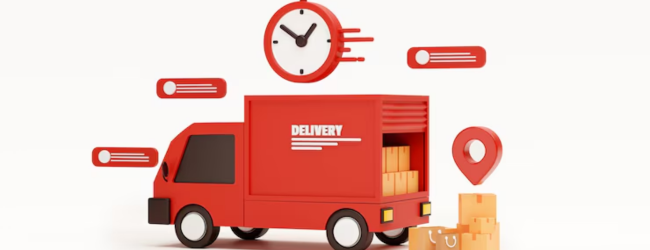
- Demand for Faster Delivery: Consumers in these cities are increasingly valuing speed and convenience. Hyperlocal Delivery Services cater to this need by offering significantly faster delivery times compared to traditional e-commerce.
- Lack of Large Fulfillment Infrastructure: Setting up large warehouses and complex logistics networks in Tier 2 and 3 cities can be challenging and expensive. Hyperlocal Delivery bypasses this by utilizing existing local stores as fulfillment points.
- Rise of Local Kirana-tech Models: Several startups are focusing on empowering local Kirana stores (neighborhood grocery stores) with technology and delivery capabilities. This “Kirana-tech” model is proving to be highly successful in catering to the hyperlocal needs of these communities. For example, companies like Dunzo and Swiggy Genie partner with local stores for quick deliveries.
- Support from Local Delivery Agents and Gig Workers: The gig economy is thriving in Tier 2 and 3 cities, providing a large pool of delivery agents who are familiar with the local geography, enabling efficient and faster deliveries.
- Better Integration of Technology in Logistics: Advancements in GPS tracking, route optimization software, and mobile apps are making Hyperlocal Delivery more efficient and scalable in these regions.
💡 Pro Tip: If you want to start an online business but have too many doubts, connect with a online business expert from Boss Wallah for guidance – https://bw1.in/1116
Business Models and Examples

- Aggregator Model: Platforms like Dunzo and Swiggy Genie act as intermediaries, connecting customers with various local businesses and providing the delivery service. They don’t own the inventory but facilitate the transaction and delivery.
- Store-Pickup/Delivery Model: Large retailers like Reliance’s JioMart and quick-commerce players like Zepto are adopting a model where customers can order online and either pick up from a nearby store or get it delivered quickly from a local fulfillment center. Zepto, for instance, has expanded rapidly in several Tier 2 cities, promising deliveries within minutes.
- Marketplace Model: Platforms like Meesho and DealShare focus on connecting local sellers, often small businesses and home-based entrepreneurs, with a wider customer base within their city. They often facilitate delivery through their own logistics network or by partnering with local delivery providers. DealShare has seen significant traction in Tier 2 and 3 cities by offering affordable products and leveraging local networks.
- Case Studies or Examples of Success Stories in Tier 2/3 Towns:
- A local bakery in a Tier 2 city uses a Hyperlocal Delivery Service aggregator to expand its customer reach beyond its immediate neighborhood, witnessing a significant increase in sales.
- A pharmacy in a smaller town partners with a delivery platform to offer same-day medicine delivery, providing a crucial service to elderly or unwell residents.
- Small apparel businesses in Tier 3 cities are leveraging social commerce platforms with integrated Hyperlocal Delivery options to reach local buyers without needing a physical storefront.
Technology Enabling Hyperlocal Services
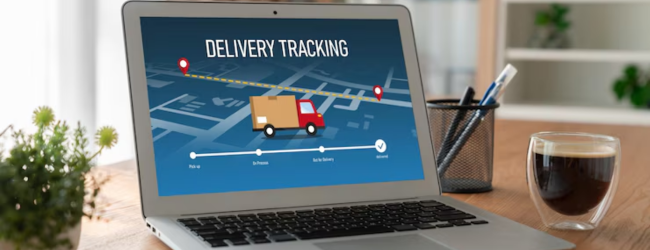
- Real-time Order Tracking: Customers can track their orders in real-time on their smartphones, providing transparency and improving the overall delivery experience.
- Last-mile Delivery Optimization: Sophisticated algorithms and GPS technology help delivery partners find the most efficient routes, reducing delivery time and costs.
- AI/ML for Inventory and Demand Prediction: Some platforms are using Artificial Intelligence and Machine Learning to predict demand patterns in specific localities, helping local businesses manage their inventory better and ensure product availability.
- Mobile-first UX for Local Users: Apps are being designed with user interfaces that are intuitive and easy to navigate for people who might be new to online shopping.
- Use of Vernacular Languages in Apps: To cater to the diverse linguistic landscape of Tier 2 and 3 cities, many Hyperlocal Delivery platforms are incorporating support for local languages in their apps, making them more accessible.
Opportunities for Local Sellers and Entrepreneurs

- Empowering Local Retailers: Hyperlocal Delivery Services provide a lifeline for local retailers, enabling them to compete with larger online players by expanding their reach and offering convenient delivery options.
- Creating Employment in Logistics and Delivery: The growth of Hyperlocal Delivery is generating significant employment opportunities for delivery riders and logistics personnel in Tier 2 and 3 cities.
- Helping Small Brands Reach a Larger Audience: Local artisans, home-based businesses, and small manufacturers can leverage these services to sell their products to a wider customer base within their city without investing heavily in their own logistics.
- Franchise and Partner Models in Smaller Towns: Many Hyperlocal Delivery companies are expanding their reach through franchise or partnership models in smaller towns, creating entrepreneurial opportunities for local individuals.
ALSO READ | Understanding the Difference Between E-commerce and E-business
Challenges to Address
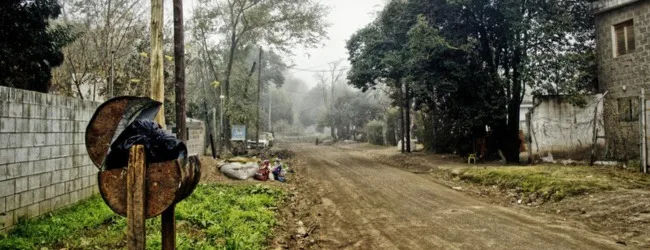
- Infrastructure and Connectivity Issues: In some remote Tier 3 areas, poor road infrastructure and inconsistent internet connectivity can pose significant challenges for seamless Hyperlocal Delivery.
- Logistics Inefficiencies in Rural Zones: Addressing the unique logistical challenges of navigating rural terrains and dispersed populations is crucial for expanding Hyperlocal Delivery effectively.
- Language and Digital Literacy Barriers: While adoption is growing, varying levels of digital literacy and language preferences need to be addressed through user-friendly interfaces and multilingual support.
- Customer Trust and Return Management: Building trust among new online shoppers and establishing efficient return and refund processes are essential for the long-term success of Hyperlocal Delivery in these markets.
- Balancing Cost with Speed and Service: Maintaining affordable delivery costs while ensuring speed and quality of service can be a tightrope walk, especially in price-sensitive markets.
The Road Ahead: What’s Next for Hyperlocal in India
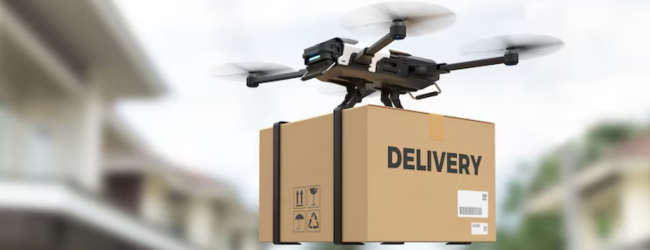
- Trends to Watch:
- Drone Delivery: While still in its nascent stages, drone technology could potentially revolutionize last-mile delivery in less congested Tier 2 and 3 areas.
- AI-driven Logistics: Further advancements in AI and ML will lead to more optimized routes, predictive delivery scheduling, and better inventory management.
- Regional Warehousing: Establishing smaller, strategically located warehouses within Tier 2 and 3 cities could further enhance delivery speed and efficiency.
- Role of Government and Policy Support: Government initiatives focused on improving digital infrastructure, promoting digital literacy, and supporting small businesses will play a crucial role in the growth of Hyperlocal Delivery.
- Predictions for the Next 5 Years: The Hyperlocal Delivery Service market in Tier 2 and 3 cities is expected to witness exponential growth in the next five years, driven by increasing internet penetration, rising disposable incomes, and the growing preference for online convenience.
- Hyperlocal + Sustainability: A Future Trend? As environmental awareness grows, there could be a greater emphasis on sustainable Hyperlocal Delivery practices, such as using electric vehicles or optimizing delivery routes to reduce carbon footprint.
Need Expert Guidance?
Starting a business can be challenging, but you don’t have to do it alone! At Boss Wallah, our 2,000+ business experts are ready to provide valuable insights and guidance. Whether you need help with marketing, finance, sourcing, or any other area of any business, our business experts are here to help you succeed- https://bw1.in/1116
Confused about Which Business to Start?
Want to start your own business but unsure which one to choose? Explore Boss Wallah, where you’ll find 500+ courses by successful business owners, featuring practical, step-by-step guides on starting and growing various businesses.
Find your perfect business idea today – https://bw1.in/1111
Conclusion
In conclusion, Hyperlocal Delivery Services are not just a fleeting trend but are rapidly becoming a cornerstone of the e-commerce landscape in Tier 2 and 3 cities in India. By bridging the gap between local businesses and a digitally savvy consumer base, these services are unlocking new economic opportunities, empowering local entrepreneurs, and offering unparalleled convenience to millions. While challenges related to infrastructure and digital literacy need to be addressed, the immense potential of these markets makes Hyperlocal Delivery a crucial element in the future of Indian e-commerce. Businesses that recognize and adapt to this evolving landscape are poised to tap into a significant growth engine.
Frequently Asked Questions (FAQs)
1. What exactly does a Hyperlocal Delivery Service deliver?
Hyperlocal Delivery Services typically deliver a wide range of goods and services available from local businesses within a specific area. This includes groceries, food from restaurants, medicines, fruits and vegetables, daily essentials, and even services like laundry pickup and drop-off.
2. How is Hyperlocal Delivery different from regular e-commerce delivery?
The main difference lies in the speed and geographical范围. Regular e-commerce often involves centralized warehouses and deliveries that can take several days and cover a wider region. Hyperlocal Delivery focuses on a smaller geographical area and aims for much faster delivery, often within hours, by sourcing products from local stores.
3. Which Indian cities are seeing the most growth in Hyperlocal Delivery?
While major metros still lead in overall e-commerce volume, Tier 2 and 3 cities like Jaipur, Lucknow, Indore, Coimbatore, Nagpur, and many others are witnessing significant growth in Hyperlocal Delivery adoption due to increasing internet penetration and consumer demand.
4. What are some popular Hyperlocal Delivery apps in India?
Some popular Hyperlocal Delivery apps in India include Dunzo, Swiggy Genie, Zepto, Blinkit, and local players that operate within specific cities or regions. Large e-commerce platforms like Amazon and Flipkart also have their own hyperlocal initiatives in select cities.
5. Is Hyperlocal Delivery more expensive than regular delivery?
Delivery charges for Hyperlocal Delivery can vary depending on factors like distance, time of day, and the platform used. Sometimes it might be slightly more expensive for the convenience of faster delivery, but many platforms offer competitive pricing and even free delivery for certain order values.
6. How can local businesses benefit from partnering with a Hyperlocal Delivery Service?
Partnering with a Hyperlocal Delivery Service allows local businesses to expand their customer reach beyond their immediate vicinity, increase sales, improve customer convenience, and compete more effectively with larger online retailers without needing to invest in their own delivery fleet.
7. What are the main challenges faced by Hyperlocal Delivery Services in smaller cities?
Key challenges include infrastructure limitations like poor roads and connectivity, logistical complexities in rural areas, language and digital literacy barriers among consumers and sellers, building customer trust, and managing delivery costs effectively.
8. What is the future outlook for Hyperlocal Delivery in Tier 2 and 3 cities in India?
The future of Hyperlocal Delivery in these cities looks very promising. With increasing internet adoption, rising disposable incomes, and a growing demand for convenience, this sector is expected to experience significant growth, driven by technological advancements and innovative business models.


